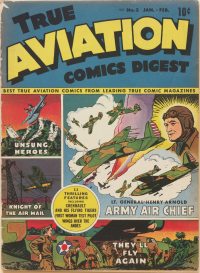| Comments |
| |
| This book is quite interesting for several reasons.
First there are several Canada-based stories, Second, apparently research has credited Patrica Highsmith with at least two of the scripts.
But what really interests me is the 'Great Reindeer Trek' story featured in 'Danger in the Arctic'. I wonder if there are even many Canadians who know about that?
And I wonder if 'Reindeer' were native to Canada in the first place, or introduced from Europe? |
|
| It seems that the oldest Rangifer Tarandus fossils are from Siberia from 2.1 million years ago, while the oldest in North America/Greenland are from about 1.6 million years ago. That was during the height of the last Ice Age. So, the best guess is that they migrated across The Bering Land Bridge, rather than across sea ice from Norway to The Shetland and Faroe Islands, and on to Iceland, and then to Greenland. It seems more likely that those that got to Iceland came from Europe,(but not certain). But that those in Greenland mark the end of the migration from Siberia. Those in Greenland belong to The North American subspecies, while those in nearby Iceland belong to The Eurasian subspecies. They are all in the same species, and can mate and have fruitful offspring.
https:en.wikipedia.org/wiki/Boreal_woodland_caribou
I will read the stories in this book and see if "The Great Reindeer Trek" is a special single event about which I was aware in real time, or if it just refers to the very long distance they migrate each year for the change of seasons and birthing their young. |
|
| "The Great Reindeer Trek" must have occurred either during or before World War II, as this book is dated 1943. So, I wasn't around yet. I DO remember the great 1950 Caribou Famine that affected several Inuit Caribou hunting tribes in The District of Keewatin (now named Nunavut). The Caribou changed their annual migration routes, due to increased Human activity due to WWI and WWII and national security measures, as well as warming of the climate. Apparently, that was already a problem during the whole of the 1940s. The Canadian Federal Government started a policy for settling those tribes in permanent well-structured homes, and trying to find an alternative way for them to feed their families. I don't remember reading about that Caribou drive from Alaska.
We certainly learned about WWI Flying Ace and Air Marshall, Billy Bishop in school. And he is among the well-known military heroes of Canadian history. |
|
| | |
| Additional Information |
| |
| Publication | January-February 1943 | Price: 0.10 USD | Pages: 1 |
| |
| Content | Genre: Non-fiction; Aviation |
| |
| Activity | Build the Sky Fighter (1 page) |
| Notes | On inside front cover. |
| |
| Comic Story | Chennault and His Flying Tigers (7 pages) |
| Featuring | Claire L. Chennault |
| Content | Genre: Non-fiction; Aviation; War |
| |
| Comic Story | Danger in the Arctic (10 pages) |
| Synopsis | The story of Joe Crosson, once of the first pilots in Alaska. |
| Content | Genre: Adventure; Non-fiction | Characters: Joe Crosson (1903-1949; Alaskan Hall of Fame Pilot); Carl Benjamin "Ben" Eielson (1897 - 1929; Alaskan Hall of Fame Pilot) |
| |
| Comic Story | Billy Bishop, Canadian Air Ace (6 pages) |
| Synopsis | Biography of Canadian World War I Ace "Billy" Bishop. |
| Content | Genre: Non-fiction; Aviation; Biography; War | Characters: William Avery "Billy" Bishop (1894-1956) |
| Notes | Writer credit was determined by textual analysis by Lou Mougin to be Patricia Highsmith. Now listed as unknown.
Joan Schenkar, writer of the Highsmith biography, "The Talented Miss Highsmith," worked with Highsmith's notebooks, now in possession of the Swiss Literary Archives, and in them, Highsmith did not start working on comics until after she graduated from Barnard College. She joined the Sangor-Pines shop in December, 1942, meaning that no credits before early 1943 can be attributed to Patricia Highsmith (as reported by Ken Quattro on 22 March 2016 in the Comics History Exchange on Facebook). |
| |
| Comic Story | Knight of the Airmail (6 pages) |
| Content | Genre: Non-fiction; Aviation |
| Notes | Writer credit was determined by textual analysis by Lou Mougin to be Patricia Highsmith. Now listed as unknown.
Joan Schenkar, writer of the Highsmith biography, "The Talented Miss Highsmith," worked with Highsmith's notebooks, now in possession of the Swiss Literary Archives, and in them, Highsmith did not start working on comics until after she graduated from Barnard College. She joined the Sangor-Pines shop in December, 1942, meaning that no credits before early 1943 can be attributed to Patricia Highsmith (as reported by Ken Quattro on 22 March 2016 in the Comics History Exchange on Facebook). |
| |
| Comic Story | Army Air Chief (4 pages) |
| Featuring | Henry "Hap" Arnold |
| Content | Genre: Non-fiction; Aviation; Biography; War |
| |
| Comic Story | Wings Over the Andes (6 pages) |
| Content | Genre: Non-fiction; Aviation |
| |
| Comic Story | First Woman Test-Pilot (6 pages) |
| Content | Genre: Non-fiction; Aviation |
| |
| Comic Story | Carl von Paulsen (6 pages) |
| Featuring | Unsung Heroes |
| Content | Genre: Non-fiction |
| |
| Comic Story | Exploring from the Air (5 pages) |
| Content | Genre: Non-fiction; Aviation |
| |
| Comic Story | They'll Fly Again (8 pages) |
| Content | Genre: Non-fiction; Aviation; War |
| Notes | about a bomber crew |
| |
| The data in the additional content section is courtesy of the Grand Comics Database under a
Creative Commons Attribution License.
More details about this comic may be available in their page here |




